Step back in time with King Arthur and you’ll find an enjoyable, if rough, ride through the dark ages.
King Arthur: The Role-Playing Wargame appears very much as a spin-off from the Total War series; you’ve got the grand map (of England rather than the World) and armies to move around between provinces. The idea is sound; lead your army through battle and take over Britain.
The game starts out just after Arthur has taken the sword from the stone; your foster father and brother swear allegiance to your cause, and it’s off into the big bad world of Brittania to unite England under your rule. For veteran strategists with a keen eye for stats and abilities, the mix of turn based strategy and real time tactics makes for a very immersive and enjoyable experience; but for first time strategy gamers, it will feel like an uphill struggle.
It’s easy to get sucked into King Arthur though, and realise that there is an immense amount of detail underneath; the music fits the period, the graphics and animations- while with some imperfections and not standing up quite so well when compared to the likes of Shogun 2 or Dawn of War- are extremely well done, with rolling medieval hills, dense towns and villages. Neocore Games have put a lot of effort into the nitty-gritty, and it’s this that will really immerse the hardcore strategy crowd. You can keep check on knight loyalty and infrastructure development and choose which spells and potions to research.
The rough edges of the game come through shortly after beginning a campaign though- you only have one chance to recruit mercenaries at the start of the game, after which you are given some punishingly difficult quests to complete; and faliure to complete said quests means, quite simply, that you cannot progress through the game. Initially the units seem quite unbalanced too; archers are extremely powerful, and seem to destroy even the strongest melee troops. It’s nice that Neocore has given the player the ability to tweak balance of units in the game’s settings, but you would’ve though it might have been more efficient to directly tweak the balance through patching.
The battles themselves can be incredibly satisfying in much the same way as winning battles in the Total War games; the battles are fairly large, the intricate animations make for fun viewing and the ability to utilise special hero units and knights adds extra depth. In a pleasant extra layer of detail, you can choose where you fight your battles, and how you fight them; if you’re defending, you may choose to surprise your opponent from the forest, but bear in mind that this carries with it it’s own set of positive and negative influences over your troops fighting skill. Skirmishes take a leaf from the Company of Heroes book with a series of victory points that you must capture and hold. Doing so will grant certain nearby troops certain buffs, such a a slow healing. All victory points will slowly drain your opponent’s morale- and vice versa. Morale plays an important part in the real time battles, as even large armies can route causing an instant defeat if their morale is low enough. Playing several battles though, and you begin to realise where the annoyance can creep in. Having huge rolling hills as the backdrop for battles is all well and good, but not if the camera moves up and down as you traverse them.
Your campaign time is mostly taken up by recruiting troops in your towns and moving them around your kingdom to expand your borders (except for the Winter season, which is strictly for move actions only, as no fighting is allowed!). As per almost any modern strategy game, there are some specialised units such as spearmen, cavalry, archers etc, but you have the ability to tweak their stats in attack and defense and so on as each unit gains experience as they become more battle hardened. This extra layer of customisability really aids the wargame ‘feel’. It’s an odd mix of the very intricate, and highly simplified; there are only two resources, automatically collected- food and wealth- yet the player’s control goes as deep as to let you assign your Knights lands, award them wives and amange their balance between good/evil and pagan/christianity.
The sense of freedom and exploration is huge- even overwhelming, when you find yourself finding out about new gameplay quirks even 100 turns in. The pacing is a little off though; you can be merrily stomping over the AI with your army one minute, then be asked with an impossible quest the next and find your troops squashed to bits because you chose to attack the wrong province. This means that you will be making copious use out of the save and load buttons, and it’s frustrating that many of your campaign faliures seem to be the result of the game screwing you rather than a poor tactical decision.
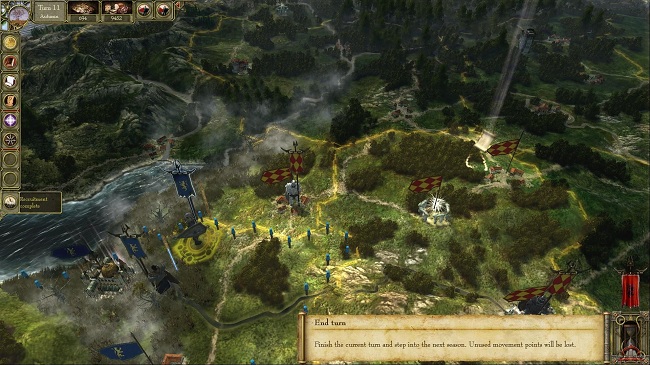
With a surprising amount of historical accuracy, troops are not permitted to combat in winter season.
The graphics of King Arthur are a real mixed bag. Certainly, the ability to zoom right down to see the individual melee battles is a great, if fairly standard, addition. Unfortunately, the game is quite poorly optimized. On a Q8200 2.33 Ghz processor and HD4850, I could barely manage high settings with a playable frame rate. Scrolling around the map where there were large battles also caused some slowdown. For those with more recent hardware however, such as my recently acquired i5 2500K and GTX 560 Ti, you should find no such issues.
Overall, King Arthur: The Role-Playing game is no bad purchase. Certainly, if you’re a little tired of the standard strategy game fare then you’ll find a ton of quirky fun in King Arthur. It is rough around the edges no doubt, and the difficulty will be off putting to some; but if you are interested in the mythology, or are just a veteran Total War fan, then you’d do yourself well to pick up King Arthur. Just bring your A-game.
This game was reviewed on the PC.
A huge amount of depth to explore, faithful to the mythology, engrossing battles, definite sense of progression to be had
Crippling and spiking difficulty, dodgy pacing, some unit balances poorly handled










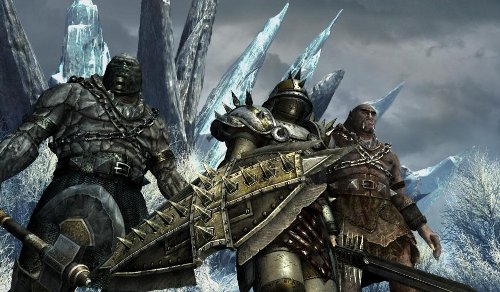
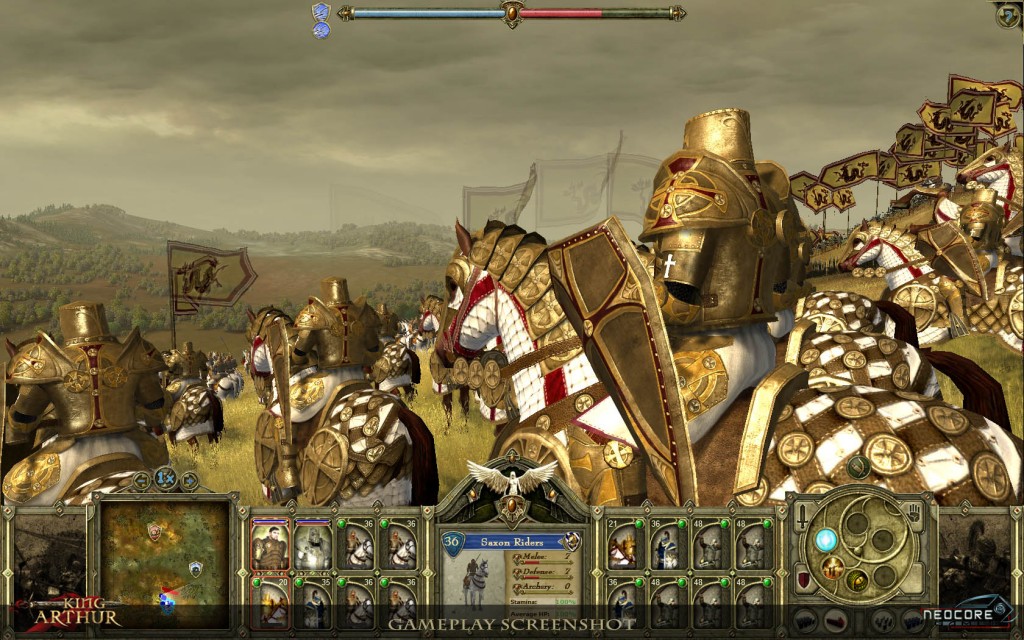
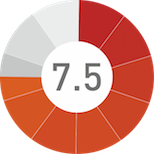


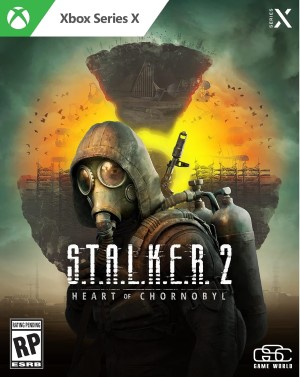






Share Your Thoughts Below (Always follow our comments policy!)